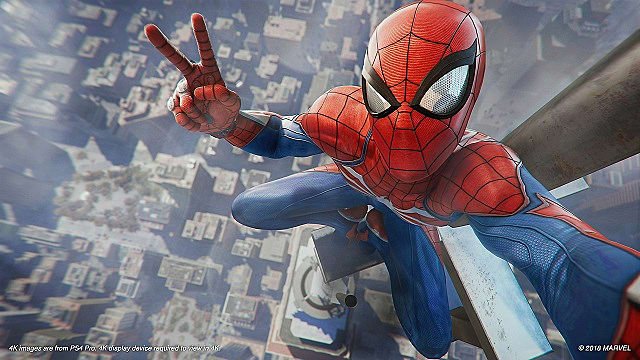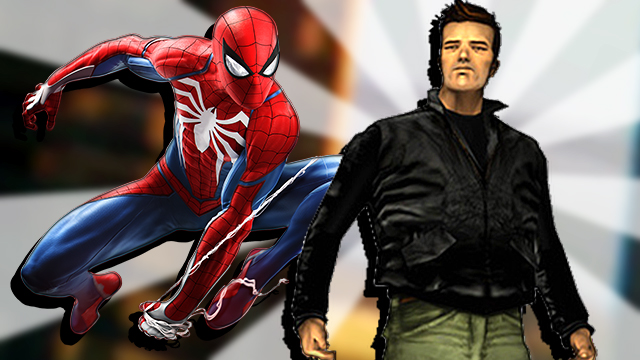Spider-Man PS4 may be super popular, but is its open world comparable to Liberty City in GTA 3? While plenty has been made about Insomniac Games’ depiction of New York, Tyler Treese argues that Marvel’s Spider-Man made him miss Rockstar Games’ PS2 classic…
When Grand Theft Auto 3 released for PS2 in 2001, it marked a seismic shift for the games industry. Never before had a game given players such an unprecedented amount of freedom within a 3D environment. They were given an entire city to do whatever they wanted to in, be it role-playing as a paramedic, or mowing down hundreds of civilians in the most exaggerated killing spree possible. There’s no denying that it was a landmark release that changed the industry forever, be it for better or worse.
Since 2001, open-worlds in gaming have only grown in size. Players don’t even have to look towards another developer or even another fictional city to notice the difference, as Grand Theft Auto 4‘s Liberty City added a tremendous amount of detail and sheer scope that was missing in the PS2 classic. Over the years, it has gotten increasingly out of hand, as more and more developers compete to see who can cultivate the most amount of virtual land in their variety of open-world titles.
I’ve enjoyed many of these games that feature massive worlds, and there’s certainly some merit to creating a gigantic landmass that players can explore. Every part of The Legend of Zelda: Breath of the Wild had some meaning to it (which is quite the feat), and it’s hard not to be wowed by the massive amount of detail that the Assassin’s Creed series manages to recreate in each of their entries. However, it finally hit me during Insomniac’s PS4 exclusive Spider-Man that a lot of the magic found in GTA 3‘s Liberty City, the open-world that inspired so many others, was nowhere to be seen.
From a technical sense, it’s hard not to marvel at the recreation of New York City that Insomniac Games managed to design. Countless photos of New York citizens recognizing locations they lived next to while playing the game have gone viral online, and it’s a trip to see Spider-Man swinging through some iconic scenery. However, most of the world just isn’t all that interesting to actually travel. Sure, the fun swinging is enough to keep most player’s brains occupied, but nobody actually grows attached to sections of Spider-Man‘s open world unless they have a real-life connection.

The one thing that Grand Theft Auto 3 did so well, was that it made players learn every inch of the city in a natural way. Liberty City, while definitely large, was never an overwhelming area to explore, and they intelligently sectioned off the world into separate islands that the story would take them to in due time. There’s a great sense of familiarity that the world builds with the player, despite it being a completely foreign place that only exists thanks to the incredible strides in technology that humans have developed.
Despite having been to New York City myself, I can’t get around Spider-Man without constantly looking at the mini-map for direction. However, if someone handed me a PS2 DualShock and a copy of GTA 3, well, first I’d ask for a console since you can’t play anything with just a controller. But then I’d be able to go to any of the landmark locales off the top of my head without any guidance, as even more than a decade later, the world of Grand Theft Auto 3 remains vivid in my memory thanks to it forcing me to learn it.
While clearly even Rockstar Games themselves have gone in a different direction since then, as Red Dead Redemption 2‘s shocking realism down to the shrinking of horse testicles will attest to, I’m hopeful that more developers will look to capture what Liberty City did so well. Make players care about the city they’re exploring, one with memorable locations and moments, rather than just trying to wow them with the fact that they’ve never seen a world this big before.

The past decade has seen an increasing amount of diminishing returns as even a game as huge as Skyrim can be made to blush by how massive some recent adventure games have been. However, how many open-worlds have actually left a lasting impression beyond wowing the player on a technical scale? Not nearly enough considering how much work goes into creating these triple A monstrosities.
Sometimes a game can do a lot more with less. That’s a lesson that gaming will have to eventually learn, especially with the continued rise in development costs and the unfortunate state of uncertainty that game development constantly teeters on where just one or two non-commercial successes can sink a well-known studio. There’s often a reason why a game considered a classic was successful, and it usually isn’t due to lowered expectations at the time of release. There’s much to be learned from gaming’s past, and hopefully GTA 3‘s world can inspire developers in a new way going forward.








